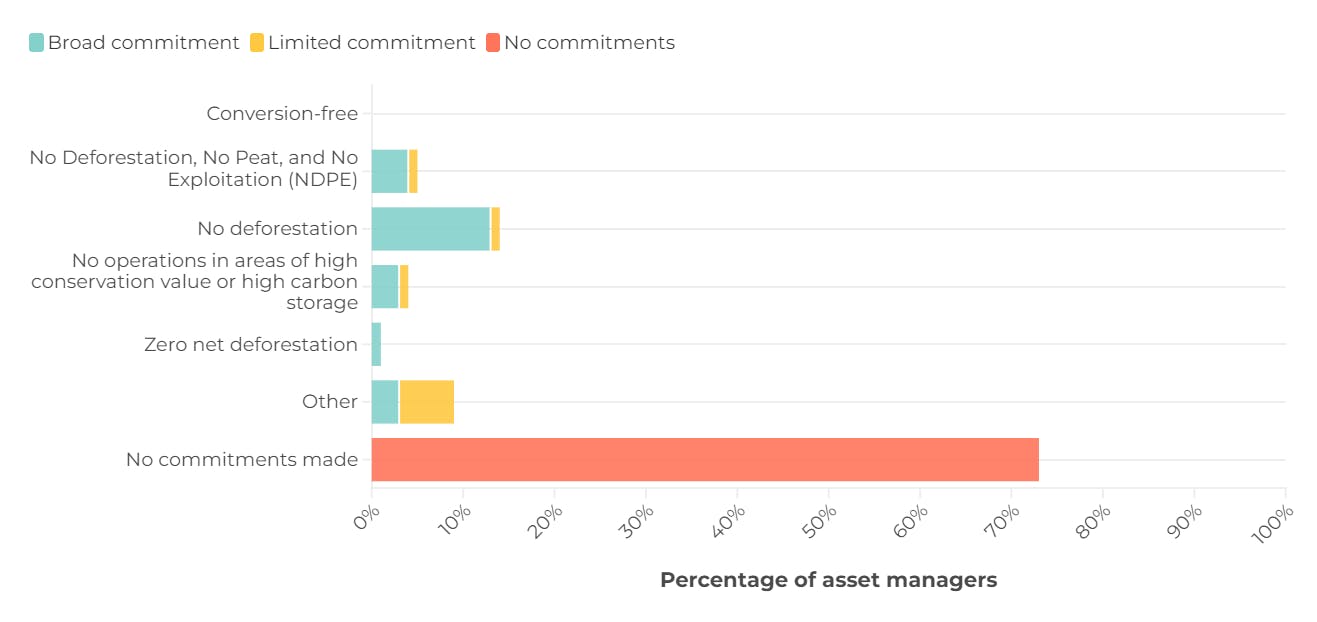Explainer: Pricing in nature-related risks – a turning point for biodiversity loss?
Explainer: Pricing in nature-related risks – a turning point for ... Eco-Business


Decoding Sustainable Finance: The Taskforce for Nature-related Financial Disclosures (TNFD)
This story is part of our Decoding Sustainable Finance series, where we attempt to break down complex terminology surrounding the latest regulations and trends in sustainable finance.
Introduction
Over half of the global economy, equivalent to approximately US$58 trillion, is moderately or highly dependent on nature, according to a recent analysis by professional services firm PwC. As a result, there is growing expectation among shareholders, regulators and customers for large corporates to disclose their reliance and impacts on nature, and to begin to address them.
At the United Nations COP15 summit last December, the landmark biodiversity agreement signed by world leaders to protect 30 per cent of the planet by 2030 included a target calling for large companies and financial institutions to “regularly monitor, assess, and transparently disclose their risks, dependencies and impacts on biodiversity”, in order to reduce their negative impacts while increasing their positive impacts over time.
“
It costs nothing to destroy a forest. It costs nothing to use as much water as you want, or to pollute. And therein lies the problem.”
David Craig, co-chair, TNFD
The Importance of Biodiversity in Sustainable Finance
According to asset manager Robeco’s 2023 Global Climate Survey, an increasing number of investors said that biodiversity was important or central to their investment policy, and find the loss of nature as great a threat as climate change.
Yet, many companies are still in the early stages of integrating nature- and biodiversity-related considerations into their commitments and risk assessment frameworks.
Advocacy group ShareAction’s survey of the world’s largest asset managers in June this year found that while almost all of them now have a long-term net-zero target, only about a quarter of them had made commitments on deforestation. Furthermore, just two-fifths of asset managers surveyed said they monitored areas of biodiversity importance and even then, there was considerable variation in terms of which “key biodiversity areas” they monitored.

Only 27 per cent of the world’s largest asset managers surveyed by ShareAction made commitments to end deforestation. Not one had set any specific targets about the conversion of natural ecosystems, or to manage investment risks to biodiversity, that went beyond their deforestation commitments. Source: ShareAction’s 2023 Point of No Returns
The Taskforce for Nature-related Financial Disclosures (TNFD)
This need for guidance has spurred several new global frameworks, the most notable being the Taskforce for Nature-related Financial Disclosures (TNFD), which builds on the work of its climate-related counterpart and is set to become the new baseline standard for nature-related risk reporting. The framework has gained backing from large international corporations like Nestlé, HSBC and BlackRock, and its final version is expected to be released in September.
What are nature-related risks?
Nature-related risks are potential threats posed to companies and investors from their dependence and impacts on nature. TNFD has grouped them into three broad categories: physical risks, which arise when natural systems are compromised; transition risks, which result from the changing regulatory, technological, or societal landscape; and systemic risks, which stem from the breakdown of the entire system, such as when tipping points are reached.
For instance, the decline of natural pollinator species and coral bleaching are risks for agribusinesses that rely on bees to pollinate their crops and fisheries that rely on healthy coral reefs respectively. Corporations can also drive nature and biodiversity loss, which alongside changing social expectations, could threaten to destabilise the basis of their operations.
The problem with the current financial system is that it assumes that the natural system is free, said TNFD co-chair David Craig. “It costs nothing to destroy a forest. It costs nothing to use as much water as you want, or to pollute. And therein lies the problem.”
TNFD will help businesses and the wider economy price in the detrimental financial impacts from nature degradation by reframing nature as a set of capital assets that provides “ecosystem services” to corporations. This is done by breaking nature down into four realms – ocean, freshwater, land and society – which are further broken down into 34 biomes (areas of land or water with distinct ecosystem services and characteristics).
By putting a value on nature-related risks, it is hoped that businesses and financial institutions using the TNFD framework will start reversing the current declines in biodiversity, also known as achieving “nature-positive” outcomes.
How do they differ from climate-related risks?
Nature loss and climate change are closely interrelated and can have mutually reinforcing effects. For instance, nature loss through deforestation – which reduces the amount of carbon sinks for sequestering greenhouse gas emissions – diminishes resilience to climate change, which in turn leads to higher temperatures and drives further loss of nature and biodiversity.
However, while nature- and climate-related risks are two sides of the same coin, they are not the same. Notably, nature-related risks are much more complex to identify and measure than
SDGs, Targets, and Indicators
1. Which SDGs are addressed or connected to the issues highlighted in the article?
- SDG 15: Life on Land
- SDG 13: Climate Action
- SDG 8: Decent Work and Economic Growth
- SDG 12: Responsible Consumption and Production
The article discusses the importance of protecting nature and biodiversity, which aligns with SDG 15. It also mentions the interrelation between nature loss and climate change, connecting it to SDG 13. The article further highlights the need for companies to integrate nature-related considerations into their commitments and risk assessment frameworks, which relates to SDG 8 and SDG 12.
2. What specific targets under those SDGs can be identified based on the article’s content?
- Target 15.5: Take urgent and significant action to reduce the degradation of natural habitats, halt the loss of biodiversity, and protect and prevent the extinction of threatened species.
- Target 13.2: Integrate climate change measures into national policies, strategies, and planning.
- Target 8.4: Improve progressively, through 2030, global resource efficiency in consumption and production and endeavor to decouple economic growth from environmental degradation.
- Target 12.6: Encourage companies, especially large and transnational companies, to adopt sustainable practices and to integrate sustainability information into their reporting cycle.
The article emphasizes the need for companies to address their impacts on nature and biodiversity, which aligns with Target 15.5. It also highlights the importance of integrating nature-related considerations into companies’ risk assessment frameworks, connecting to Target 13.2. The article further discusses the need for companies to adopt sustainable practices and disclose information about their sustainability efforts, relating to Target 8.4 and Target 12.6.
3. Are there any indicators mentioned or implied in the article that can be used to measure progress towards the identified targets?
- Indicator 15.5.1: Red List Index
- Indicator 13.2.1: Number of countries that have integrated mitigation, adaptation, impact reduction, and early warning measures into relevant policies, strategies, and planning.
- Indicator 8.4.1: Material footprint, material footprint per capita, and material footprint per GDP.
- Indicator 12.6.1: Number of companies publishing sustainability reports.
The article does not explicitly mention these indicators, but they can be used to measure progress towards the identified targets. Indicator 15.5.1 measures the conservation status of species and can be used to assess progress in halting biodiversity loss. Indicator 13.2.1 measures the integration of climate change measures into national policies, providing insights into progress in addressing climate-related risks. Indicator 8.4.1 measures resource efficiency, which can indicate progress in decoupling economic growth from environmental degradation. Indicator 12.6.1 measures the number of companies publishing sustainability reports, reflecting progress in adopting sustainable practices and disclosing sustainability information.
SDGs, Targets, and Indicators Table
| SDGs | Targets | Indicators |
|---|---|---|
| SDG 15: Life on Land | Target 15.5: Take urgent and significant action to reduce the degradation of natural habitats, halt the loss of biodiversity, and protect and prevent the extinction of threatened species. | Indicator 15.5.1: Red List Index |
| SDG 13: Climate Action | Target 13.2: Integrate climate change measures into national policies, strategies, and planning. | Indicator 13.2.1: Number of countries that have integrated mitigation, adaptation, impact reduction, and early warning measures into relevant policies, strategies, and planning. |
| SDG 8: Decent Work and Economic Growth | Target 8.4: Improve progressively, through 2030, global resource efficiency in consumption and production and endeavor to decouple economic growth from environmental degradation. | Indicator 8.4.1: Material footprint, material footprint per capita, and material footprint per GDP. |
| SDG 12: Responsible Consumption and Production | Target 12.6: Encourage companies, especially large and transnational companies, to adopt sustainable practices and to integrate sustainability information into their reporting cycle. | Indicator 12.6.1: Number of companies publishing sustainability reports. |
Behold! This splendid article springs forth from the wellspring of knowledge, shaped by a wondrous proprietary AI technology that delved into a vast ocean of data, illuminating the path towards the Sustainable Development Goals. Remember that all rights are reserved by SDG Investors LLC, empowering us to champion progress together.
Source: eco-business.com

Join us, as fellow seekers of change, on a transformative journey at https://sdgtalks.ai/welcome, where you can become a member and actively contribute to shaping a brighter future.







